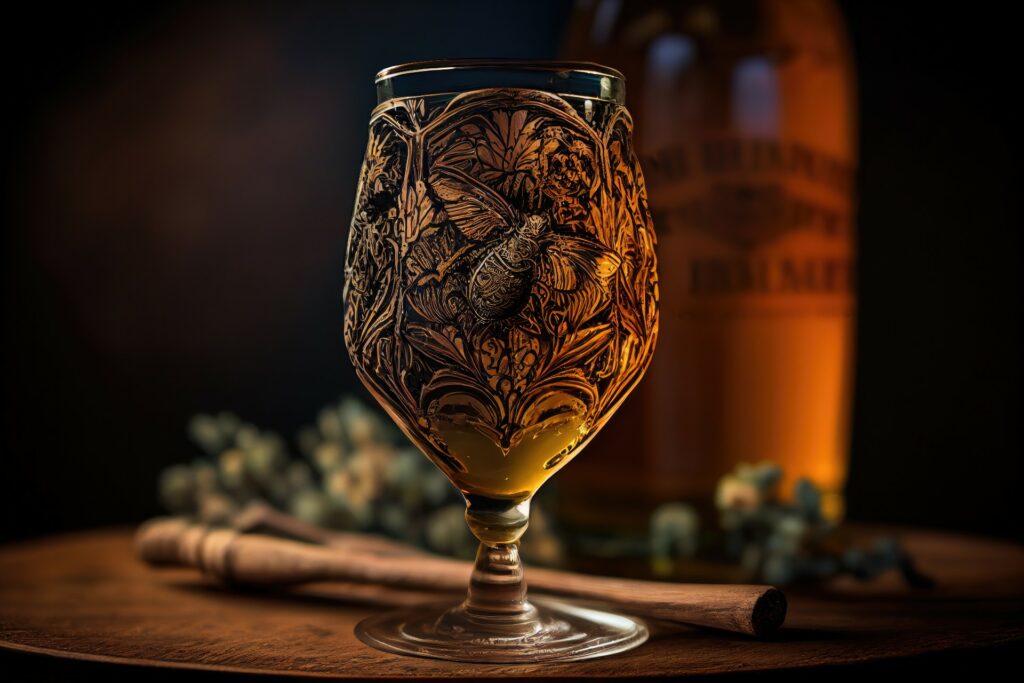Beekeeping and Mead Making

If this is the first time you have heard of mead, or honey wine, you may picture a Renaissance Faire crowded with cosplay-dressed adults chugging it down out of a stein. If this is what you picture in your head, you are not far off. Mead making has been around since 7000 BC. It is rumored to have been the favorite beverage of Aristotle. However, beekeepers are no dummies, and their love for beekeeping makes them naturally curious about the various uses of their by-products. It is no wonder that making mead has become a craft that many are passionate about. Beekeepers become intimate with their hives and get involved in many aspects of beekeeping, including honey extraction, among other caretaking tasks.
Making Mead
Mead, officially named hydromel, is best when it is made slowly and in cold temperatures. It takes approximately a year to be ready for tasting, and most will say it is well worth the wait. Harvesting honey goes alongside mead making, which is done typically once a year.
Although mead making is simple, the best ones come from beekeepers passionate about their bees. In order to make mead, warm water is mixed with the honey extracted from the hives. Honey from hives is about 40% sugar. Next, yeast is added, and that starts the process of the sugar being digested to begin the fermentation process. Mead has a silty sediment that settles into a hazy amber colored wine. Mead can cost up to fifty dollars a bottle to make and is often corked with a layer of carefully molded cylinders of beeswax.
Choosing the Best Honey for Excellent Mead
It is essential to choose the right honey for your mead. Honey with strong and distinct flavors is key to making the best mead possible. Some of the considerations are the location, the floral source, and the time of year.
The floral source of honey significantly impacts the flavor. The plants and flowers that bees use as food sources help determine the taste. Clover honey, for example, is mild and sweet, whereas buckwheat honey is robust and adds complexity to the mead’s flavor profile. Where you live makes a difference in the flavor of the mead, too. Different regions have different tastes, which depend on climate and plants. Wildflower honey is a popular mead base that is harvested in specific areas. When honey is harvested, it also impacts the flavor of mead. Spring honey has a different flavor profile than honey harvested in the fall, and this is mainly due to the different plants that bloom at various times of year. A local beekeeper would love to share their stories with visitors and get into the details of mead making and may even offer a tasting if they are able to!
Keeping It Local
The most dedicated beekeepers are always available to help other beekeepers or bees in trouble. In their tireless efforts, beekeepers are doing what they can to help local bee colonies and keep the population growing and thriving. Beekeepers are environmentally conscious and continually seek new ways to achieve sustainability. Beekeepers always recommend “keeping it local,” including drinking. Sustainability focuses on agriculture and organic beekeeping. Beekeeping is an art and can be done anywhere in the world.
Beekeepers are keenly aware of the critical status of many bee species. They believe it is vital to educate and bring others to recognize how the decline of bee populations will continue to directly impact agriculture and food production. Beekeepers point the finger at pollution and lack of nutrition sources for the declining bee populations and some species’ extinction.
So, all you need is some local honey, water, and yeast, and you can try your hand at mead-making. Well, it is slightly more complicated. You will need equipment to make the process easier, and it is always recommended to do some research or visit your local beekeeper for more information relevant to your specific region. If you are a beekeeper who wants to delve deeper into mead making, play with the flavors, and you can directly impact the flavors by what you plant for your bees and what you add. Some mead makers add cinnamon, vanilla, or citrus to their mead to create unique flavors. If you aren’t quite ready to try it yourself, you can purchase mead by the bottle – ask for Medovina, and you may stump your local wine connoisseur. Whenever possible, support your local beekeeper first. However, if they do not make or sell mead, you can purchase a bottle at your local wine shop.
If you have any questions about beekeeping or concerns about a beehive that may pose a risk to people or pets, contact D-Tek for humane live bee removal so bees can be relocated in the same region.
